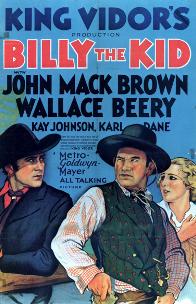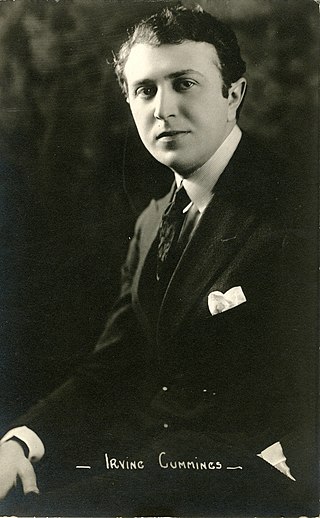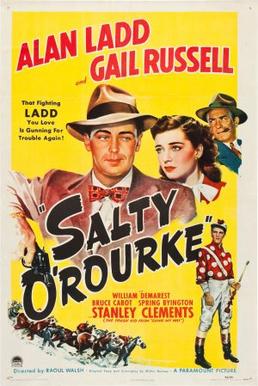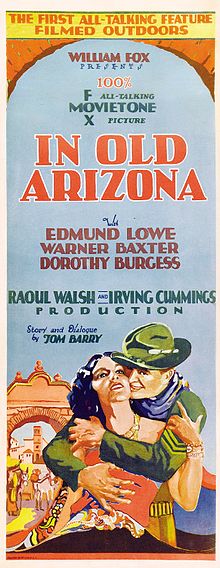
Kings Row is a 1942 film starring Ann Sheridan, Robert Cummings, Ronald Reagan and Betty Field that tells a story of young people growing up in a small American town at the turn of the twentieth century. The picture was directed by Sam Wood. The film was adapted by Casey Robinson from a best-selling 1940 novel of the same name by Henry Bellamann. The musical score was composed by Erich Wolfgang Korngold, and the cinematographer was James Wong Howe. The supporting cast features Charles Coburn, Claude Rains, Judith Anderson and Maria Ouspenskaya.

Warner Leroy Baxter was an American film actor from the 1910s to the 1940s. Baxter is known for his role as the Cisco Kid in the 1928 film In Old Arizona, for which he won the Academy Award for Best Actor at the 2nd Academy Awards. He frequently played womanizing, charismatic Latin bandit types in Westerns, and played the Cisco Kid or a similar character throughout the 1930s, but had a range of other roles throughout his career.
Sadie Thompson is a 1928 American silent drama film that tells the story of a "fallen woman" who comes to Pago Pago to start a new life, but encounters a zealous missionary who wants to force her back to her former life in San Francisco. The film stars Gloria Swanson, Lionel Barrymore, and Raoul Walsh, and it is one of Swanson's more successful films. Due to the public's apathy towards silent films, a sound version was prepared in the latter half of 1928. While the sound version has no audible dialog, it features a synchronized musical score with sound effects along with a theme song.

Raoul Walsh was an American film director, actor, founding member of the Academy of Motion Picture Arts and Sciences (AMPAS), and the brother of silent screen actor George Walsh. He was known for portraying John Wilkes Booth in the silent film The Birth of a Nation (1915) and for directing such films as the widescreen epic The Big Trail (1930) starring John Wayne in his first leading role, The Roaring Twenties starring James Cagney and Humphrey Bogart, High Sierra (1941) starring Ida Lupino and Humphrey Bogart, and White Heat (1949) starring James Cagney and Edmond O'Brien. He directed his last film in 1964. His work has been noted as influences on directors such as Rainer Werner Fassbinder, Jack Hill, and Martin Scorsese.

The Cisco Kid is a fictional character found in numerous film, radio, television and comic book series based on the fictional Western character created by O. Henry in his 1907 short story "The Caballero's Way", published in Everybody's Magazine, v17, July 1907, as well as in the collection Heart of the West (1907). Originally a murderous criminal in O. Henry's story, the Kid was depicted as a heroic Mexican caballero later in films, radio and television adaptations.
The 2nd Academy Awards, presented by the Academy of Motion Picture Arts and Sciences (AMPAS) on April 3, 1930, at an awards banquet in the Cocoanut Grove of the Ambassador Hotel in Los Angeles, honored the best films released between August 1, 1928, and July 31, 1929. This was the first Academy Awards ceremony broadcast on radio, by local station KNX, Los Angeles.

Arthur Edeson, A.S.C. was an American cinematographer. Born in New York City, his career ran from the formative years of the film industry in New York, through the silent era in Hollywood, and the sound era there in the 1930s and 1940s. His work included many landmarks in film history, including The Thief of Bagdad (1924), All Quiet on the Western Front (1930), Frankenstein (1931), The Maltese Falcon (1941), and Casablanca (1942).

Gaetano (Tony) Gaudio, A.S.C. was a pioneer Italian-American cinematographer of more than 1000 films. Gaudio won the Academy Award for Best Cinematography for Anthony Adverse, becoming the first Italian to have won an Oscar, and was nominated five additional times for Hell's Angels, Juarez, The Letter, Corvette K-225, and A Song to Remember. He is cited as the first to have created a montage sequence for a film in The Mark of Zorro. He was among the founders of the American Society of Cinematographers, and served as President from 1924 until 1925.
George Joseph Amy was an American film editor. He was born in Brooklyn, New York, and started his career at the age of 17, finding his niche at Warner Brothers in the 1930s. It was Amy's editing that was one of the main reasons Warners' films got their reputation for their fluid style and breakneck pace.

Billy the Kid is a 1930 American pre-Code Western film directed in widescreen by King Vidor about the relationship between frontier outlaw Billy the Kid and lawman Pat Garrett. In February 2020, the film was shown at the 70th Berlin International Film Festival, as part of a retrospective dedicated to King Vidor's career.

Irving Cummings was an American movie actor and director.

White Heat is a 1949 American film noir directed by Raoul Walsh and starring James Cagney, Virginia Mayo and Edmond O'Brien.

Walter Wanger's Vogues of 1938 is a 1937 musical comedy film produced by Walter Wanger and distributed by United Artists. It was directed by Irving Cummings, written by Bella and Sam Spewack, and starred Warner Baxter and Joan Bennett. It was filmed in New York City in Technicolor.
The Cisco Kid and the Lady is a 1939 American Western film starring Cesar Romero as the Cisco Kid, replacing Warner Baxter, who'd won the Academy Award for the role, and is the fifth film in The Cisco Kid series. For Cesar Romero, this was the first of six Cisco Kid roles.

Daddy Long Legs (1931) is an American pre-Code film directed by Alfred Santell and starring Janet Gaynor and Warner Baxter. The story involves an orphan who is taken under the wing of a wealthy benefactor.

Salty O'Rourke is a 1945 American sports drama film directed by Raoul Walsh and starring Alan Ladd, Gail Russell and William Demarest. Produced and distributed by Paramount Pictures, it was nominated for an Academy Award in 1946.

The Arizona Kid is a 1930 American pre-Code Western film directed by Alfred Santell. It was produced by Fox Film Corporation.

The Cisco Kid is a 1931 American pre-Code Western film directed by Irving Cummings and starring Warner Baxter. It was produced and distributed by Fox Film Corporation and is a follow-up to Fox's hugely successful 1928 In Old Arizona and 1930's The Arizona Kid, both of which had starred Baxter as the same character The Cisco Kid. A copy is preserved at the Library of Congress.

The Return of the Cisco Kid is a 1939 American Western film directed by Herbert I. Leeds and written by Milton Sperling. The film stars Warner Baxter, Lynn Bari, Cesar Romero, Henry Hull, Kane Richmond and C. Henry Gordon. The film was released on April 28, 1939 by 20th Century-Fox.

Adrian Michael Morris was an American actor of stage and film, and a younger brother of Chester Morris.

















